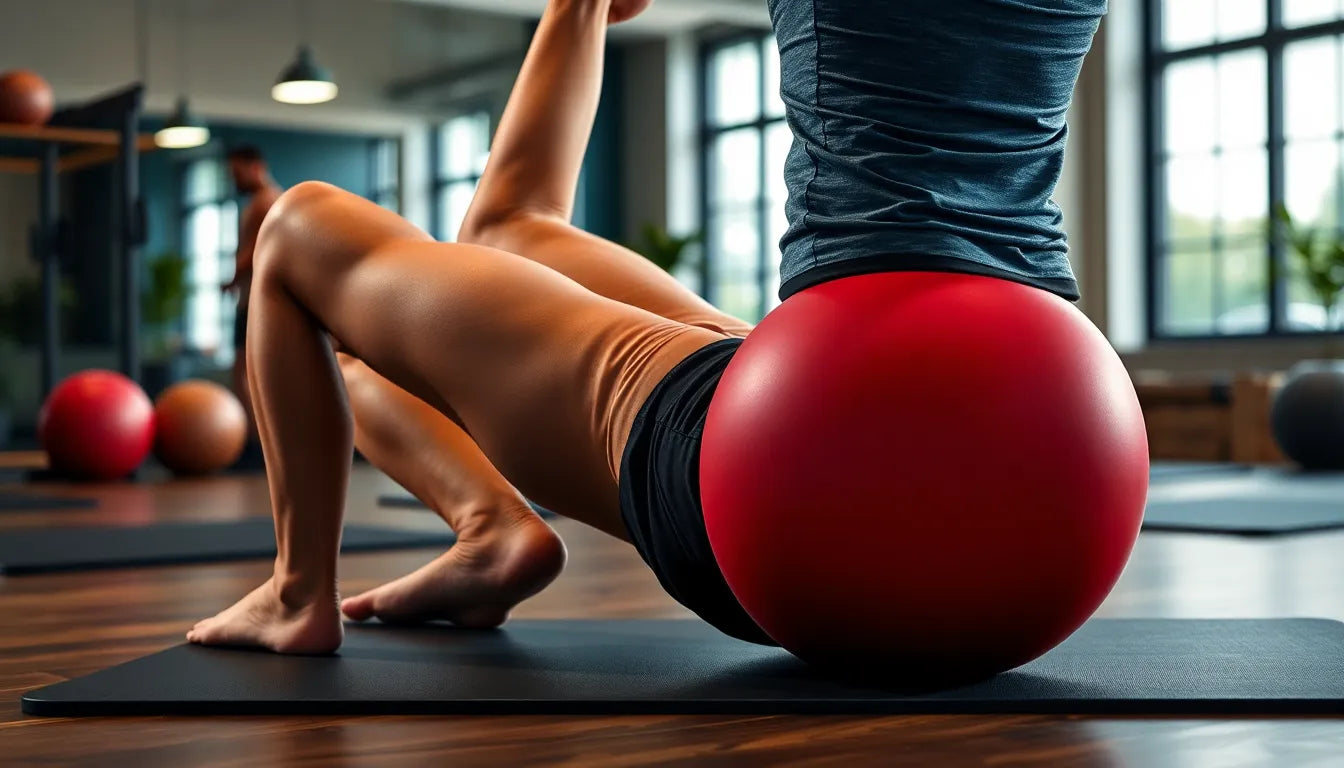Experiencing discomfort in the middle of your back can be a common issue that affects many individuals, impacting daily activities and overall quality of life. This kind of pain, often referred to as mid-back pain, can arise from various factors such as poor posture, muscle strain, or prolonged periods of sitting. Understanding the nature and causes of mid-back pain is crucial in addressing it effectively. By incorporating targeted exercises into your routine, you can alleviate pain, enhance mobility, and strengthen your back, leading to improved well-being.
understanding mid-back pain
Mid-back pain, located between the shoulder blades and the lower back, can manifest as a dull ache, sharp pain, or even a burning sensation. This discomfort is not only common but also disruptive, making simple tasks like sitting at a desk or lifting objects challenging. The prevalence of mid-back pain underscores the importance of addressing it proactively to prevent further complications.
One of the most effective ways to manage mid-back pain is through exercise. Targeted exercises can significantly improve the condition by enhancing flexibility, increasing strength, and promoting better posture. Regular exercise helps to maintain the spine's natural alignment and reduces the strain on the muscles and ligaments in the back. By focusing on both mobility and strength, you can foster a healthier back and reduce the likelihood of recurring pain.
the role of exercise in pain relief
Incorporating specific exercises into your routine is a powerful tool for relieving mid-back pain. These exercises work by promoting blood circulation, which helps to nourish the muscles and tissues involved, and by enhancing flexibility, which reduces stiffness and tension. Exercises that target the mid-back area can help restore normal movement patterns, alleviate discomfort, and prevent future episodes of pain.
When approaching mid-back pain relief through exercise, it's essential to focus on both mobility and strength. Mobility exercises help to increase the range of motion and flexibility in the back, making it easier to perform daily activities without pain. Meanwhile, strength exercises build the muscles that support the spine, providing stability and reducing the risk of injury.
By integrating a combination of mobility and strength exercises into your daily routine, you can effectively manage mid-back pain and enhance your overall physical health. This comprehensive approach not only addresses the immediate discomfort but also contributes to long-term back health and resilience.
In the following sections, we will explore specific exercises designed to target mid-back pain, offering detailed instructions and insights into their benefits. By understanding and implementing these exercises, you can take proactive steps towards a pain-free and active lifestyle.
key exercises for mid-back pain relief
Addressing mid-back pain effectively involves incorporating specific exercises that focus on stretching, rotation, and strengthening. These exercises are designed to alleviate discomfort by improving flexibility, promoting proper spinal alignment, and enhancing muscle strength. Here, we delve into a selection of exercises that are particularly beneficial for relieving mid-back pain, providing step-by-step instructions and highlighting their unique benefits.
knæ-til-bryst stræk (knee-to-chest stretch)
The knee-to-chest stretch is a simple yet effective exercise that targets the lower back, helping to release tension and improve flexibility.
- Instructions: Lie on your back with your legs extended. Bend one knee and gently pull it towards your chest, holding the position for 15-30 seconds before switching to the other leg.
- Benefits: This exercise helps stretch the lower back muscles, relieving tightness and promoting relaxation.
rotation på alle fire (all-fours rotation)
Enhancing spinal mobility is crucial for reducing stiffness in the mid-back area, and the all-fours rotation is an excellent exercise for this purpose.
- Instructions: Position yourself on all fours, ensuring your back remains flat. Bring one elbow down to touch the opposite hand, then rotate it upwards towards the ceiling. Perform 5-10 repetitions on each side.
- Benefits: This exercise improves spinal flexibility and helps alleviate tension in the back muscles.
saxon side bend
The Saxon side bend is a dynamic exercise that targets the lateral muscles of the torso, enhancing overall flexibility and strength.
- Instructions: Stand upright with your feet shoulder-width apart. Raise your arms over your head and interlace your fingers. Bend your torso to one side, hold briefly, and return to the center. Repeat on the opposite side.
- Benefits: This exercise stretches the sides of the torso, improving lateral flexibility and reducing tension.
bro på knæ (kneeling bridge)
The kneeling bridge is an effective way to strengthen the lower back and hip flexors, contributing to better posture and reduced pain.
- Instructions: Kneel on the floor with your back straight. Gently push your hips forward to create a slight arch in the lower back. Hold for 10 seconds and repeat 5-10 times.
- Benefits: This exercise strengthens the lower back, enhancing stability and reducing the risk of injury.
jefferson curl
The Jefferson curl is a comprehensive exercise that improves spinal flexibility and helps in releasing tension throughout the back.
- Instructions: Stand with your feet hip-width apart. Slowly roll down through your spine, bending forward as far as comfortable. Roll back up to standing, vertebra by vertebra.
- Benefits: This exercise enhances spinal flexibility and alleviates tension, promoting better posture.
Incorporating these exercises into your routine can significantly contribute to reducing mid-back pain and improving overall back health. By focusing on a combination of stretching, rotation, and strengthening movements, you can address the root causes of discomfort and work towards a more active and pain-free lifestyle. Remember to perform these exercises mindfully, listening to your body and adjusting as needed to suit your comfort levels.

Men's Posture Shirt™ - Black
Patented shirt improves posture and relieves pain with muscle-activating NeuroBand™ technology.

Women's Posture Shirt™ - Black
Supports, activates muscles, and helps reduce back pain. Registered medical device with proven effect.
additional exercises and tips for mid-back pain relief
While the previously discussed exercises are highly effective in managing mid-back pain, incorporating a few more exercises can enhance your routine. Adding "Bækkenkip" (pelvic tilts) and "Bird Dog" to your exercise regimen can further strengthen your core and improve stability.
Bækkenkip (pelvic tilts): Lie on your back with your knees bent and feet flat on the floor. Tilt your pelvis to press your lower back into the floor, then release. Repeat 5-10 times. This exercise helps in strengthening the lower back and abdominal muscles.
Bird Dog: Start on all fours, ensuring your back is flat. Extend one arm forward and the opposite leg backward, keeping your body stable. Hold for a few seconds, then switch sides. Perform 5-10 repetitions. This exercise enhances core stability and balance.
incorporating exercises into your daily routine
To achieve the best results, aim to perform 3-5 exercises daily. Consistency is key in managing mid-back pain effectively. Integrating these exercises into your busy schedule can be simple. Consider setting aside a specific time each day, such as in the morning or evening, to focus on your routine. Gradually increase the intensity and duration as your strength and flexibility improve, always listening to your body and adjusting as needed.
when to seek professional help
If you find that your mid-back pain persists or worsens despite regular exercise, it is crucial to consult a healthcare professional. Persistent pain may indicate an underlying issue that requires medical attention. Additionally, ergonomic products, such as those offered by Anodyne, can complement your exercise routine by providing posture support and reducing strain on your back.
frequently asked questions
how often should I do these exercises?
Aim for daily practice, focusing on 3-5 selected exercises each session to maintain consistency and effectiveness.
can I do these exercises if I have severe pain?
If pain is severe, it is advisable to consult a healthcare professional before starting any exercise routine to ensure safety and appropriate modifications.
what if the exercises increase my pain?
Stop the exercises immediately and consult a physiotherapist or doctor to assess your condition and provide tailored advice.
do I need any special equipment for these exercises?
Most exercises require no equipment, but using a yoga mat can provide additional comfort during floor exercises.
are there other lifestyle changes that can help with mid-back pain?
Maintaining good posture, staying active, and using ergonomic furniture can further prevent and alleviate mid-back pain, contributing to overall back health.
Kilder
- Kroppens Hus. "Lindre smerter i mellemryggen: Det skal du vide".
- Regionshospitalet Randers. "Rygsmerter øvelser".
- Maxer. "Ryg og lænd smerter".
- Gigtforeningen. "Øvelser for ryg".
- Fysio Danmark. "Ondt i ryggen".
- Region Midtjylland. "Ondt i ryggen - se hvad du selv kan gøre".
- Aarhus Osteopati. "Behandling af rygsmerter".


















